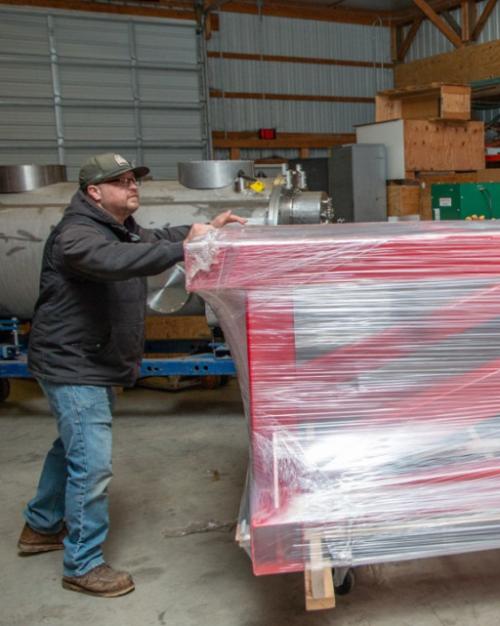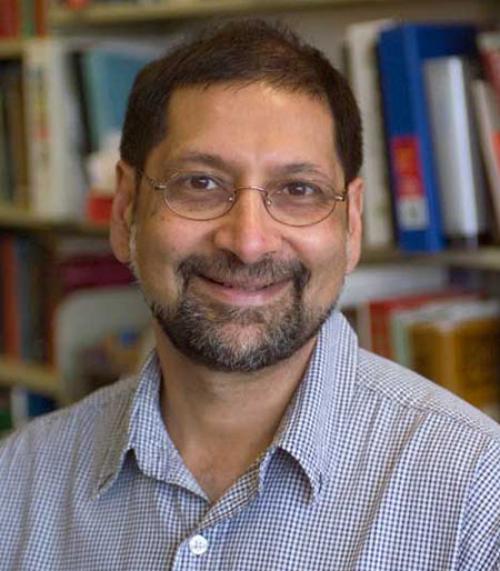When Cornell physicists Robert Richardson, David Lee and Douglas Osheroff received the 1996 Nobel Prize for their discovery of the superfluid state of liquid helium, it was only the beginning. Now a new team of Cornell researchers, building on that work, have found new complexities in the phenomenon, with implications for the study of superconductivity and theoretical models of the origin of the universe.
“We wanted to see new phase transitions,” said Jeevak Parpia, professor of physics. As it turned out, he saw a more “efficient” transition compared to any observed before in helium.
The results are published July 3 in the journal Nature Communications. Parpia and his research group collaborated with a group led by John Saunders, professor of physics, at Royal Holloway, University of London.
When the isotope of helium known as helium-3 is cooled to 3.2 degrees above absolute zero it changes from gas to liquid – what physicists call a “change of state.” Cool it further – to about a thousandth of a degree above absolute zero – and it becomes a “superfluid” that can flow without resistance from its surroundings. If you put some of it in a circular channel and start it flowing around the circle, it will flow forever, not slowed by friction. This behavior of helium is of great interest because electrons in a superconductor also behave as a superfluid, flowing without resistance from the atoms in the conductor.
To look for the transition, Parpia’s research group used the Cornell NanoScale Science and Technology Facility to make a “torsion pendulum” head, a silicon disk 14 millimeters in diameter, in which they etched a circular channel 3.5 millimeters wide, adding a glass cover to make the cavity 1.08 microns (millionths of a meter) high. Rotating the disk forward and back makes the superfluid helium flow around in the cavity, and the amount that is superfluid can be observed as a change in the period of oscillation of the disk.
The researchers observed the two phases of superfluidity that Richardson, Lee and Osheroff had reported, referred to as A and B. They also found that the A phase could be “supercooled” but nowhere as much as it can in larger, bulky experiments.
An example of supercooling can be seen when water is cooled below the freezing point while still remaining liquid. But toss in a tiny bit of ice or even some dust to form a “nucleation point,” and the water will freeze, spreading out from there.
In the Cornell experiment, the helium in some cases cooled below the temperature at which the A to B transition was expected but remained in the A phase, though it might spontaneously transition to B. In large systems such a spontaneous transition is thought to occur due to a cosmic ray or some other local radiation that entered the sample to act as a nucleation point, or it is triggered by vibration. Or perhaps, theorists had proposed, there might be other intermediate phases we still have not identified that assist the transition to happen by a process termed “resonant tunneling.”
Parpia chose a nanofabricated apparatus to study the effect of confinement. In a superconductor, electrons join in “Cooper pairs” that are magnetically neutral and will not interact with nuclei in the conductor. Similarly, helium atoms in the neutral superfluid pair up, orbiting around each other like weights at the end of a string thrown spinning through the air. The researchers set the height of the fluid channel to be comparable to a few of the pairing distance lengths, so that interaction between the pairs and the walls alters the balance toward the A phase over the B phase. Whether new phases exist under these conditions is not yet clear but should be revealed in further studies, the researchers said, that will test the effects of varying degrees of containment.
If the role of intermediate phases is borne out, the researchers said, this may help cosmologists explain and model how the universe evolved “efficiently” in a series of phase transitions during the moments following the Big Bang.
The work at Cornell was supported by the National Science Foundation; collaborators in London were supported by the Engineering and Physical Sciences Research Council of the U.K. and the European Microkelvin Platform.
This story also appeared in the Cornell Chronicle.




